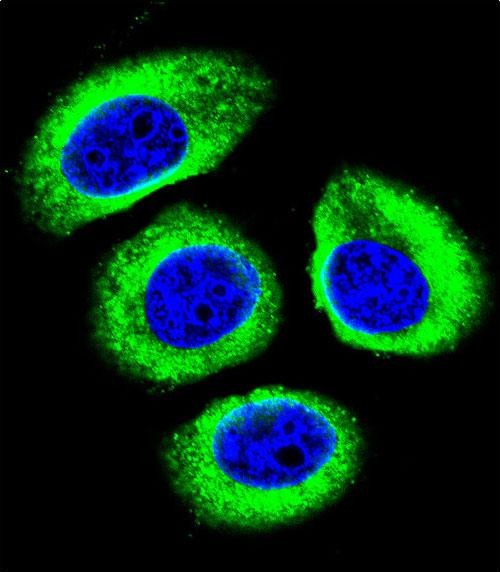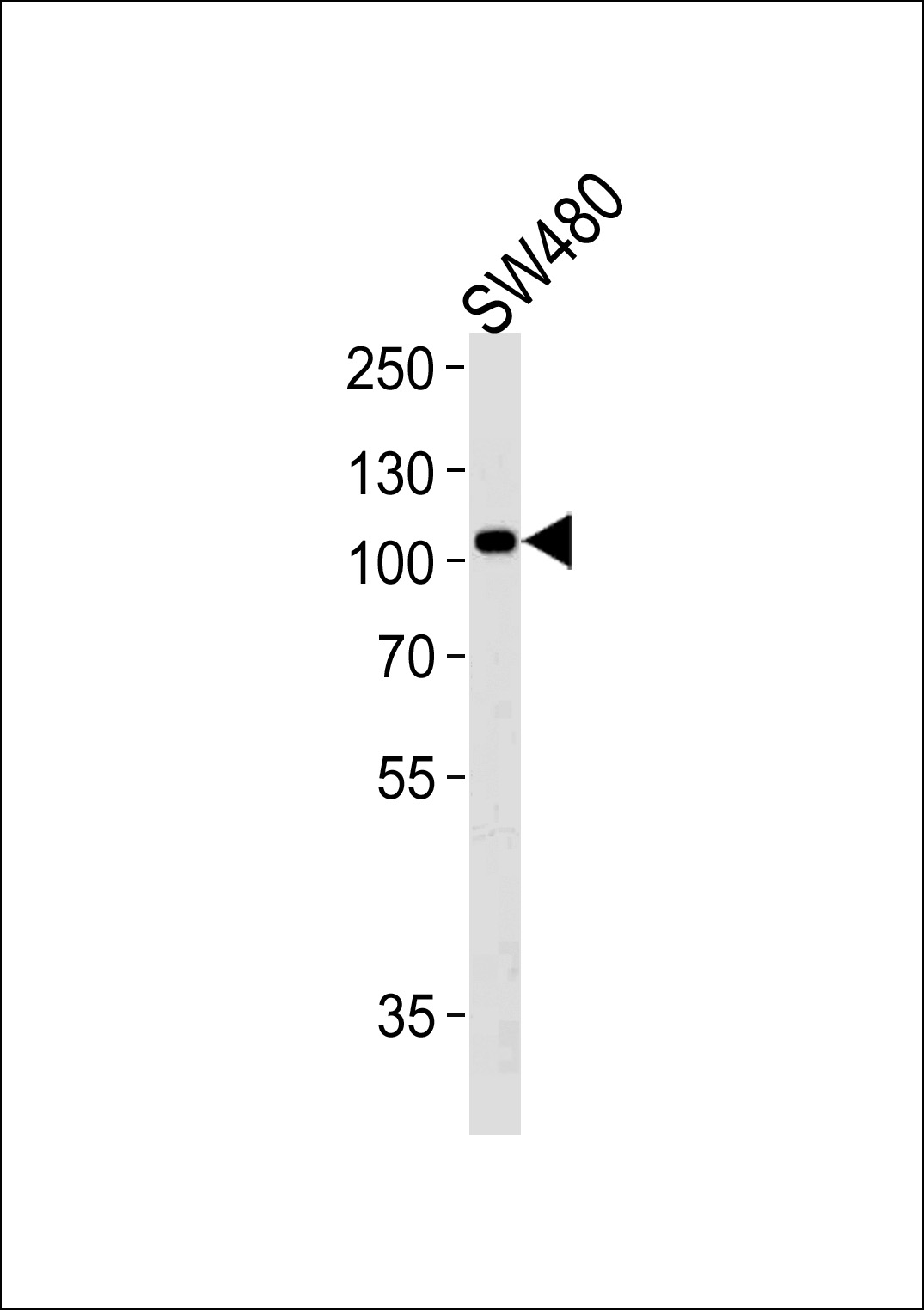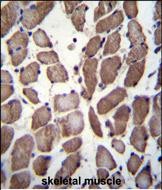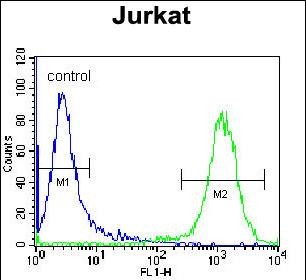LRP12 Antibody (C-term)
Affinity Purified Rabbit Polyclonal Antibody (Pab)
- SPECIFICATION
- CITATIONS
- PROTOCOLS
- BACKGROUND

Application
| WB, FC, IF, IHC-P, E |
|---|---|
| Primary Accession | Q9Y561 |
| Other Accession | Q8BUJ9, Q9BE74, NP_038465.1 |
| Reactivity | Human |
| Predicted | Monkey, Mouse |
| Host | Rabbit |
| Clonality | Polyclonal |
| Isotype | Rabbit IgG |
| Calculated MW | 94984 Da |
| Antigen Region | 635-662 aa |
| Gene ID | 29967 |
|---|---|
| Other Names | Low-density lipoprotein receptor-related protein 12, LRP-12, Suppressor of tumorigenicity 7 protein, LRP12, ST7 |
| Target/Specificity | This LRP12 antibody is generated from rabbits immunized with a KLH conjugated synthetic peptide between 635-662 amino acids from the C-terminal region of human LRP12. |
| Dilution | WB~~1:1000 FC~~1:10~50 IF~~1:10~50 IHC-P~~1:10~50 E~~Use at an assay dependent concentration. |
| Format | Purified polyclonal antibody supplied in PBS with 0.09% (W/V) sodium azide. This antibody is purified through a protein A column, followed by peptide affinity purification. |
| Storage | Maintain refrigerated at 2-8°C for up to 2 weeks. For long term storage store at -20°C in small aliquots to prevent freeze-thaw cycles. |
| Precautions | LRP12 Antibody (C-term) is for research use only and not for use in diagnostic or therapeutic procedures. |
| Name | LRP12 |
|---|---|
| Synonyms | ST7 |
| Function | Probable receptor, which may be involved in the internalization of lipophilic molecules and/or signal transduction. May act as a tumor suppressor. |
| Cellular Location | Membrane; Single- pass type I membrane protein. Membrane, coated pit |
| Tissue Location | Widely expressed in heart, skeletal muscle, brain, lung, placenta and pancreas, but not in tissues consisting of a large number of epithelial cells, such as liver and kidney. Expressed at very low levels in a number of tumor-derived cell lines |

Thousands of laboratories across the world have published research that depended on the performance of antibodies from Abcepta to advance their research. Check out links to articles that cite our products in major peer-reviewed journals, organized by research category.
info@abcepta.com, and receive a free "I Love Antibodies" mug.
Provided below are standard protocols that you may find useful for product applications.
Background
This gene encodes a member of the low-density lipoprotein receptor related protein family. The product of this gene is a transmembrane protein that is differentially expressed in many cancer cells. Alternate splicing results in multiple transcript variants.
References
Garnis, C., et al. Oncogene 23(14):2582-2586(2004)
Battle, M.A., et al. Biochemistry 42(24):7270-7282(2003)
Qing, J., et al. Oncogene 18(2):335-342(1999)
If you have used an Abcepta product and would like to share how it has performed, please click on the "Submit Review" button and provide the requested information. Our staff will examine and post your review and contact you if needed.
If you have any additional inquiries please email technical services at tech@abcepta.com.













 Foundational characteristics of cancer include proliferation, angiogenesis, migration, evasion of apoptosis, and cellular immortality. Find key markers for these cellular processes and antibodies to detect them.
Foundational characteristics of cancer include proliferation, angiogenesis, migration, evasion of apoptosis, and cellular immortality. Find key markers for these cellular processes and antibodies to detect them. The SUMOplot™ Analysis Program predicts and scores sumoylation sites in your protein. SUMOylation is a post-translational modification involved in various cellular processes, such as nuclear-cytosolic transport, transcriptional regulation, apoptosis, protein stability, response to stress, and progression through the cell cycle.
The SUMOplot™ Analysis Program predicts and scores sumoylation sites in your protein. SUMOylation is a post-translational modification involved in various cellular processes, such as nuclear-cytosolic transport, transcriptional regulation, apoptosis, protein stability, response to stress, and progression through the cell cycle. The Autophagy Receptor Motif Plotter predicts and scores autophagy receptor binding sites in your protein. Identifying proteins connected to this pathway is critical to understanding the role of autophagy in physiological as well as pathological processes such as development, differentiation, neurodegenerative diseases, stress, infection, and cancer.
The Autophagy Receptor Motif Plotter predicts and scores autophagy receptor binding sites in your protein. Identifying proteins connected to this pathway is critical to understanding the role of autophagy in physiological as well as pathological processes such as development, differentiation, neurodegenerative diseases, stress, infection, and cancer.





